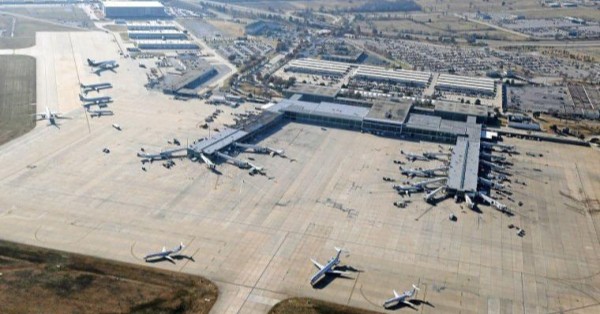Tulsa International Airport (TUL) is transforming its operations by deploying a state-of-the-art private cellular network across its airfield in partnership with Communication Technology Services (CTS). This upgrade replaces aging Wi-Fi and fiber-based systems with a secure, high-performance private network designed to handle mission-critical applications.
The network covers TUL’s perimeter entry gates and operational zones, providing reliable connectivity for security and communications while laying the groundwork for future innovations such as AI-driven automation and autonomous vehicles.
Connectivity and Infrastructure Challenges at TUL
Prior to this deployment, TUL faced significant operational and infrastructure hurdles:
-
Aging Systems: Legacy Wi-Fi and fiber solutions powering badging and camera systems were expensive to maintain and prone to downtime.
-
Operational Gaps: Inconsistent wireless coverage impacted efficiency and safety.
-
Scalability Issues: Existing platforms lacked the flexibility to support emerging technologies and increasing data demands.
-
Cost Inefficiency: Expanding Wi-Fi coverage across the airfield would have required heavy infrastructure investment with limited ROI.
These challenges underscored the need for a more resilient, scalable, and secure connectivity solution.
How TUL’s Private LTE Network Enhances Security and Efficiency
CTS deployed a dedicated private LTE network at TUL, designed to replace legacy systems and support critical airport operations.
Key Features:
-
High-Performance Connectivity: Provides seamless, low-latency coverage across the airfield and perimeter gates.
-
Enhanced Security: Ensures reliable operation of surveillance cameras and badging systems for perimeter access control.
-
Operational Efficiency: Streamlines workflows by eliminating network downtime and reducing maintenance costs.
-
Future-Ready Infrastructure: Scalable architecture supports integration with AI-powered automation, autonomous vehicles, and advanced airline operations.
Proving the Value: Operational Gains from Private Cellular at TUL
Rob Cerbone, Vice President of Marketing at CTS, noted: “TUL is leading the way for small and mid-size airports by investing in private cellular for improved operations and attracting more technology investments by the airlines.”
Brent Wall, Director of Innovation and Technology at Tulsa Airports Improvement Trust, added: “This initiative will be the model for many regional airports worldwide, enabling automation and AI-driven improvements in operations and the passenger journey.”
Why TUL Selected Private LTE and Edge Integration for Critical Ops
-
Private LTE Network: Delivers dedicated, secure coverage optimized for airport-specific requirements.
-
Edge Integration: Supports real-time video streaming and operational control at low latency.
-
Scalable Architecture: Designed to accommodate future upgrades including 5G migration and IoT-based automation.
Key Benefits of Private Cellular for Regional Airports
-
Improved Security: Reliable connectivity ensures uninterrupted operation of surveillance and access control systems.
-
Operational Savings: Reduces reliance on costly fiber builds and minimizes downtime.
-
Enhanced Passenger Experience: Creates a more seamless, secure, and efficient airport environment.
-
Technology Roadmap: Prepares TUL for advanced applications like digital twins and autonomous ground operations.
-
Competitive Advantage: Establishes TUL as a benchmark for other regional airports adopting Private Networks.
How TUL’s Deployment Sets a Blueprint for Airport Digitalization
This deployment demonstrates the growing role of Mobile Private Networks in aviation infrastructure. TUL’s initiative serves as a blueprint for small and mid-size airports seeking cost-effective, scalable solutions to enhance safety, efficiency, and digital transformation.
By adopting a private network, TUL positions itself as a testbed for next-generation airport technologies, aligning with trends in smart transportation hubs and integrated airline operations.
Collaboration Between TUL and CTS on Next-Gen Airport Connectivity
CTS designed and deployed the private cellular network, providing a dedicated infrastructure to power TUL’s critical systems. Leveraging its carrier-grade expertise, CTS ensured the network met both immediate operational needs and long-term scalability requirements.
TUL Private Cellular Rollout and AI-Driven Roadmap
Tulsa Airports Improvement Trust collaborated on integration, aligning the network with the airport’s operational workflows and digital roadmap.
-
July 2025: Private cellular network deployed and operational across TUL’s airfield and perimeter gates.
-
2026 Roadmap: Plans to integrate AI-driven automation and explore edge computing for autonomous airport services.
Leadership Insights on Future-Ready Airport Infrastructure
“By investing in private cellular, TUL is ensuring a future-ready infrastructure that enhances security, efficiency, and passenger satisfaction.” – Rob Cerbone, CTS.
“This initiative positions TUL as a model for regional airports seeking to modernize operations and embrace digital transformation.” – Brent Wall, Tulsa Airports Improvement Trust.







































